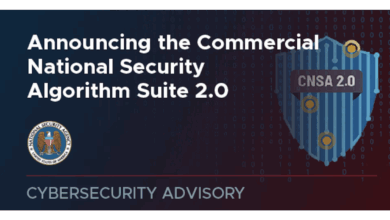Inside ITU’s New Quantum Key Standard (Y.3800)

Table of Contents
In late 2019, the International Telecommunication Union (ITU) quietly reached a milestone in cybersecurity: it approved a new standard that could redefine how we secure data in the coming quantum era. The standard, known as ITU-T Recommendation Y.3800, is an “Overview on networks supporting Quantum Key Distribution” – essentially a blueprint for building networks that use the strange laws of quantum physics to protect encryption keys. It’s a big step toward quantum-safe communication, ensuring that as quantum computers loom on the horizon, our sensitive data can stay safe. Just days after its release, here’s an in-depth look at what Y.3800 is and why it matters.
The Quantum Threat to Today’s Encryption
For decades, modern encryption has relied on math problems that are practically impossible for classical computers to solve. However, quantum computers promise to change that. These powerful machines could crack public-key cryptosystems like RSA and ECC – the locks underlying secure websites, banking, and digital communications. In fact, experts warn of a “harvest now, decrypt later” threat, where attackers steal encrypted data now, hoping to decrypt it once quantum computers become available. Quantum computing’s ability to factor large numbers or search huge keyspaces means many of today’s cryptographic methods might become obsolete.
But quantum technology isn’t just a threat – it’s also part of the solution. Quantum cryptography, particularly Quantum Key Distribution (QKD), offers a new way to secure data. QKD uses the quantum properties of particles (like photons of light) to generate and exchange encryption keys with provable security. Any eavesdropping on a QKD link will disturb the quantum states and alert the legitimate users. In short, if classical encryption is threatened by quantum computers, QKD is one way to fight back using quantum physics itself.
However, early QKD systems had a limitation: they were mostly point-to-point. A pair of devices – say, one in Alice’s lab and one in Bob’s – could send quantum keys to each other over a dedicated fiber. This is fine for two users, but not practical for a larger network. What if you want a network of many users (think banks, data centers, or 5G cell sites) all sharing secure keys? You’d need a way to route keys through the network, not just direct fiber links between every pair. That’s where ITU’s Y.3800 comes in.
A New Standard Emerges: ITU-T Y.3800
Published in October 2019, ITU-T Y.3800 is the first global standard to move QKD from isolated links to integrated networks. It was developed by ITU’s Study Group 13 (focused on future networks) with broad industry and academic input. In fact, representatives from organizations like NICT (Japan’s National Institute of Information and Communications Technology), NEC, and Toshiba teamed up to propose the basic QKD network framework – and by July 2019, the ITU approved it as Recommendation Y.3800.
So what does Y.3800 actually cover? In brief, it provides a high-level architecture and design philosophy for QKD networks (often abbreviated QKDN). It doesn’t dive into the physics of QKD – it assumes the quantum link technology exists. What Y.3800 does is describe how to build a network out of these QKD links, in a way that can scale up and interoperate. According to the ITU, the standard “gives an overview of networks supporting QKD” and provides support for the design, deployment, operation, and maintenance of QKD networks in terms of standardized technologies. In other words, it’s a blueprint for QKD at the network level, ensuring that different vendors’ QKD equipment and key management software can work together in a larger system.
Crucially, Y.3800 extends the capabilities of QKD beyond point-to-point. It defines how multiple QKD devices and nodes can be interconnected to form a larger, reliable key distribution network. The goal is to make quantum keys available whenever and wherever needed in a networked environment, much like today’s key management servers do for classical keys.
From Quantum Links to Quantum Networks
To understand Y.3800’s impact, let’s contrast a simple QKD link with a QKD network. In a basic QKD link, two nodes share a key over a single quantum channel (say, a fiber optic cable). But imagine a QKD network with many nodes (locations): not every pair of nodes will have a direct quantum fiber between them. Y.3800’s framework introduces ways to still share keys across the network by relaying keys through intermediate nodes.
Each node in a QKD network typically has two main components:
- QKD devices (quantum layer equipment) that perform the photon-based key exchange on direct links to other nodes.
- Key management systems that store the secret keys and handle key requests from applications.
Y.3800 formalizes this by describing a layered model for QKD networks. At the lowest layer – the Quantum layer – are the QKD links and devices generating raw keys. Above that is the Key Management layer, which is essentially a network of key managers that store keys and transfer them between nodes. On top of these, Y.3800 also describes a QKDN Control layer and a QKDN Management layer. These higher layers manage the resources of the QKD network (for example, deciding which path to send keys through, monitoring link health, etc.), much like control and management systems in conventional telecom networks. Finally, Y.3800 shows how the QKD network interfaces with the user network – the “normal” communication network that will use the keys. The user network has its own service layer (where applications like VPNs or encrypted video calls reside) and a management layer, which will interact with the QKD system to request keys and ensure they’re delivered securely.
What does this layered approach achieve? It creates a common language and structure, so that anyone building a QKD network can ensure all the pieces fit together. For example, Y.3800 describes the “conceptual structures of a QKDN and a user network”, making clear what components are needed and how they relate. It identifies key functions a QKD network must perform – things like generating keys, storing them, relaying them across nodes, and providing them to encryption applications on demand. By standardizing these functions, Y.3800 lets different vendors’ equipment interoperate within one network. A QKD link from Company A can feed keys into a key management system from Company B, and a router from Company C can then route those keys to the far end of the network – all following the common architecture.
To illustrate, consider a scenario with three sites: X, Y, and Z. X and Y have a direct QKD link, as do Y and Z. X and Z do not. According to Y.3800’s network approach, site Y can act as a trusted relay. Here’s how a key from X could get to Z:
- Local key generation: X and Y use their quantum link to generate a secret key shared between them (call it KXY). Likewise, Y and Z share a key KYZ. These are generated by QKD devices at the quantum layer.
- Key relay: Suppose X wants to share a key with Z (call this new key KXZ). X can encrypt KXZ using the key it shares with Y (KXY) and send it to Y over normal communication lines. Because that message is encrypted with a quantum-generated key, it’s strongly protected.
- Handoff at the trusted node: Y decrypts the message with KXY, obtaining KXZ in plaintext – but Y is a trusted node, meaning it’s a secure, authenticated part of the network. Y then re-encrypts KXZ using its quantum key with Z (KYZ) and sends it along to Z. Z decrypts and recovers KXZ. Now X and Z share a secret key, even though they never had a direct quantum link.
This process, known as key relay, is fundamental to QKD networks. Y.3800’s framework ensures that such processes are accounted for and standardized. It enables networks to leap past the distance limitations of a single quantum link by chaining multiple links together through trusted nodes. In essence, a QKD network can work a bit like a traditional network of VPNs or secure routers, except the “keys” being passed are generated with quantum security.
Of course, the term “trusted node” implies an important caveat: each intermediate node must be physically secure, because at that node the key exists (briefly) in unencrypted form. If an attacker compromised the node, they could steal the keys. Y.3800 recognizes such security considerations, and it doesn’t solve them all in one go – rather, it provides the framework in which they must be addressed. Techniques like tamper-proof hardware, strict access control, or even encrypting the keys again at the application layer can mitigate these risks. The ITU is working on complementary standards (in Study Group 17, for example) to specify security requirements for QKD nodes and management, ensuring trusted nodes truly deserve that trust.
Building on Y.3800: A Family of Quantum Network Standards
Y.3800 is intentionally an “overview” standard – it lays the groundwork, but it doesn’t spell out every detail. The idea was to get the fundamental architecture in place, and then develop additional standards to handle specific aspects of QKD networks. This is similar to how, in the early days of the internet, one standard defined the overall network layering (remember the OSI model or TCP/IP stack), and then other standards defined the details of each layer.
Indeed, Y.3800 is just the first in a series of ITU recommendations on QKD networks. Hot on its heels are draft standards like Y.3801 (which defines detailed functional requirements for QKD networks) and Y.3802 (which will specify the functional architecture in more detail). Y.3800 provides the big picture; Y.3801 zooms in on what each element must do; Y.3802 and others will describe how to implement those elements in a consistent way. By late 2019, these follow-up recommendations were already in progress, ensuring that the initial framework in Y.3800 would soon be backed by concrete specifications for implementers.
This layered approach to standards is good news for anyone looking to deploy QKD technology. It means they can start designing systems according to Y.3800’s architecture now, confident that upcoming standards will fill in any gaps. It also signals to researchers what problems need solving. For instance, Y.3800 doesn’t specify how to do key management or routing in a QKD network – it just says those functions are needed. So researchers and companies know that proposals for key management protocols or optimal key routing algorithms will be welcome, possibly feeding into standards like Y.3803 (for key management) or Y.3804 (for control and management) down the line.
Why Y.3800 Matters
The release of Y.3800 is more than just a new document for engineers – it’s a signpost in the evolution of secure networks. Here’s why it’s significant:
- It bridges quantum tech and classical networks: QKD has often been demonstrated in specialized environments – a lab or a single fiber link. Y.3800 brings it into the realm of network engineering. It shows how quantum key systems can integrate with today’s telecom networks, data centers, and even future 5G/6G infrastructure. This is crucial for moving QKD from experiments to real-world deployment.
- Interoperability and scalability: With multiple vendors and research groups building QKD devices, there’s a risk of incompatible systems. A standard architecture ensures that, for example, a bank’s QKD network in one city could, in principle, connect to a QKD network from an internet provider, and they’d speak the same language. As one IEEE report noted, Y.3800 will enable the integration of QKD technology into large-scale ICT networks. That paves the way for scaling up – from a single link to a global network of quantum-secured channels.
- Guidance for newcomers: Many telecom operators and enterprises are just beginning to explore quantum-safe security. Y.3800 serves as a primer on how to think about QKD networks. It identifies the pieces you need and how they fit, so companies can plan investments and pilot projects with a clearer roadmap. It’s like getting a cookbook for a cuisine no one has mastered yet – extremely helpful when you’re experimenting with new recipes for security.
- Synergy with other security approaches: Y.3800’s focus is QKD, but it doesn’t exist in a vacuum. The world is also working on post-quantum cryptography (PQC) – new mathematical algorithms for encryption that are resistant to quantum attacks. There’s often a debate: QKD vs PQC – which is the “right” solution? In practice, we will likely deploy both. QKD can add an extra layer of security (information-theoretic secure keys), while PQC algorithms can upgrade classical protocols. By standardizing QKD networks, ITU is ensuring that if organizations choose the QKD route, there’s a solid foundation to follow. And nothing stops one from using QKD-derived keys and PQC algorithms together for defense in depth.
- Global collaboration: The development of Y.3800 has been a global effort. Over 300 experts from 180 organizations across 40+ countries have contributed to ITU’s quantum security work. This matters because securing networks is a global challenge – a chain is only as strong as its weakest link. If only a few countries have quantum-safe networks and others don’t, attackers will target the weakest points. A widely adopted international standard helps raise the security baseline for everyone. (Moreover, having a common standard can prevent a fragmentation where, say, Europe and Asia adopt incompatible QKD systems. Y.3800 helps align efforts.)
From Lab Experiments to Real Networks
It’s worth noting that the concepts in Y.3800 didn’t come out of thin air. They build on over a decade of research and experiments in QKD networking. For example, back in 2008, the EU’s SECOQC project demonstrated a six-node QKD network in Vienna, linking together QKD devices from different labs into a small metropolitan network. Since then, there have been other test networks and field trials – in Geneva, Tokyo, Beijing, Cambridge, and elsewhere – all exploring how to manage keys across multiple nodes. These pioneering experiments often developed their own ad-hoc solutions; the lessons learned fed into the standards discussions. Y.3800 is essentially capturing best practices from those early networks and making a template that future deployments can follow.
As of late 2019, when Y.3800 was brand new, fully operational quantum key distribution networks were still in their infancy. A few national research networks existed, and small-scale commercial deployments were starting to peek over the horizon. With Y.3800 published, the stage is set for more ambitious projects. We can anticipate that telecom operators and technology companies will use this standard to build trial networks – for instance, linking data centers in a city with quantum keys, or adding QKD on top of fiber backbones for critical infrastructure. In the coming years (as was already being hinted by industry insiders in 2019), we expect to see quantum key distribution complementing classical encryption in sectors like finance, government, and telecommunications.
Conclusion
As of late 2019, ITU-T Y.3800 stands as one of the first comprehensive standards for quantum-safe networking, marking the transition of QKD from research to deployment. It provides the foundation to build networks where encryption keys are delivered with quantum-grade security, integrating smoothly with existing communications systems. With a logical structure and global buy-in, Y.3800 is poised to accelerate the development of quantum key distribution networks around the world.
Quantum Upside & Quantum Risk - Handled
My company - Applied Quantum - helps governments, enterprises, and investors prepare for both the upside and the risk of quantum technologies. We deliver concise board and investor briefings; demystify quantum computing, sensing, and communications; craft national and corporate strategies to capture advantage; and turn plans into delivery. We help you mitigate the cquantum risk by executing crypto‑inventory, crypto‑agility implementation, PQC migration, and broader defenses against the quantum threat. We run vendor due diligence, proof‑of‑value pilots, standards and policy alignment, workforce training, and procurement support, then oversee implementation across your organization. Contact me if you want help.



